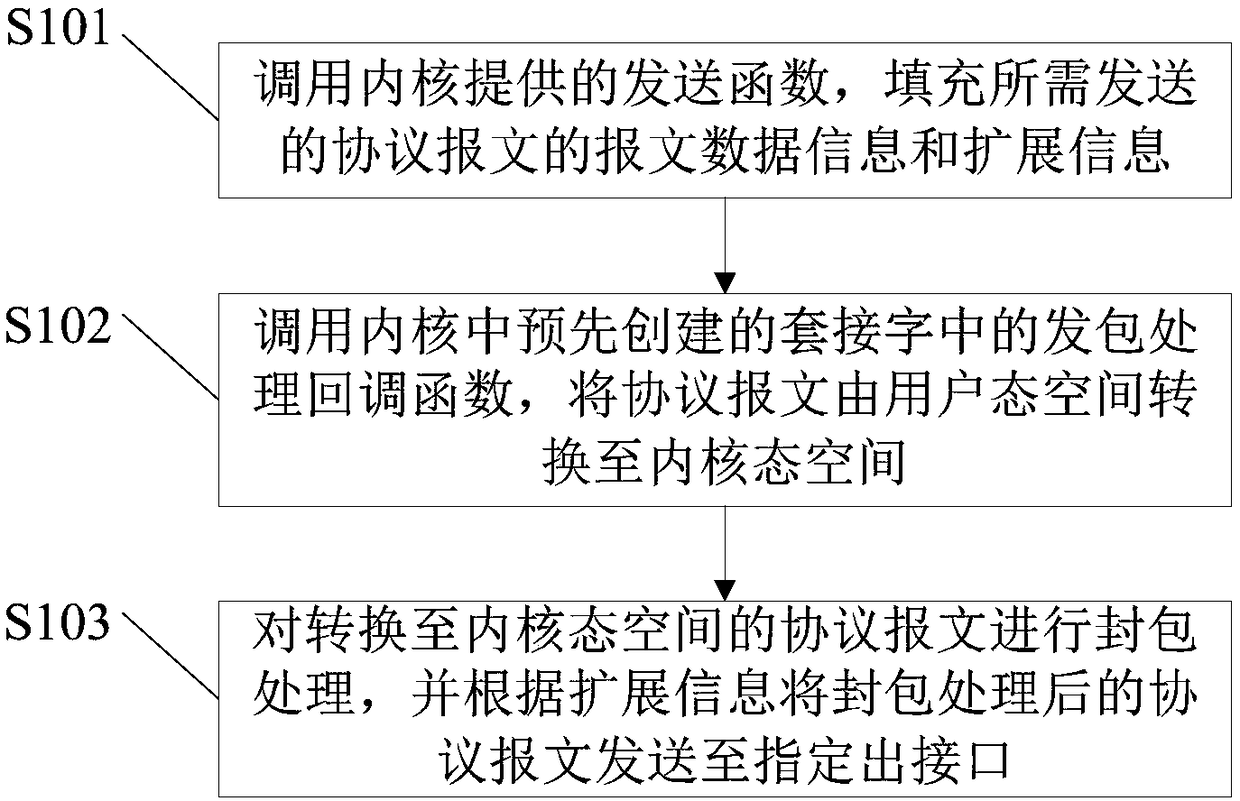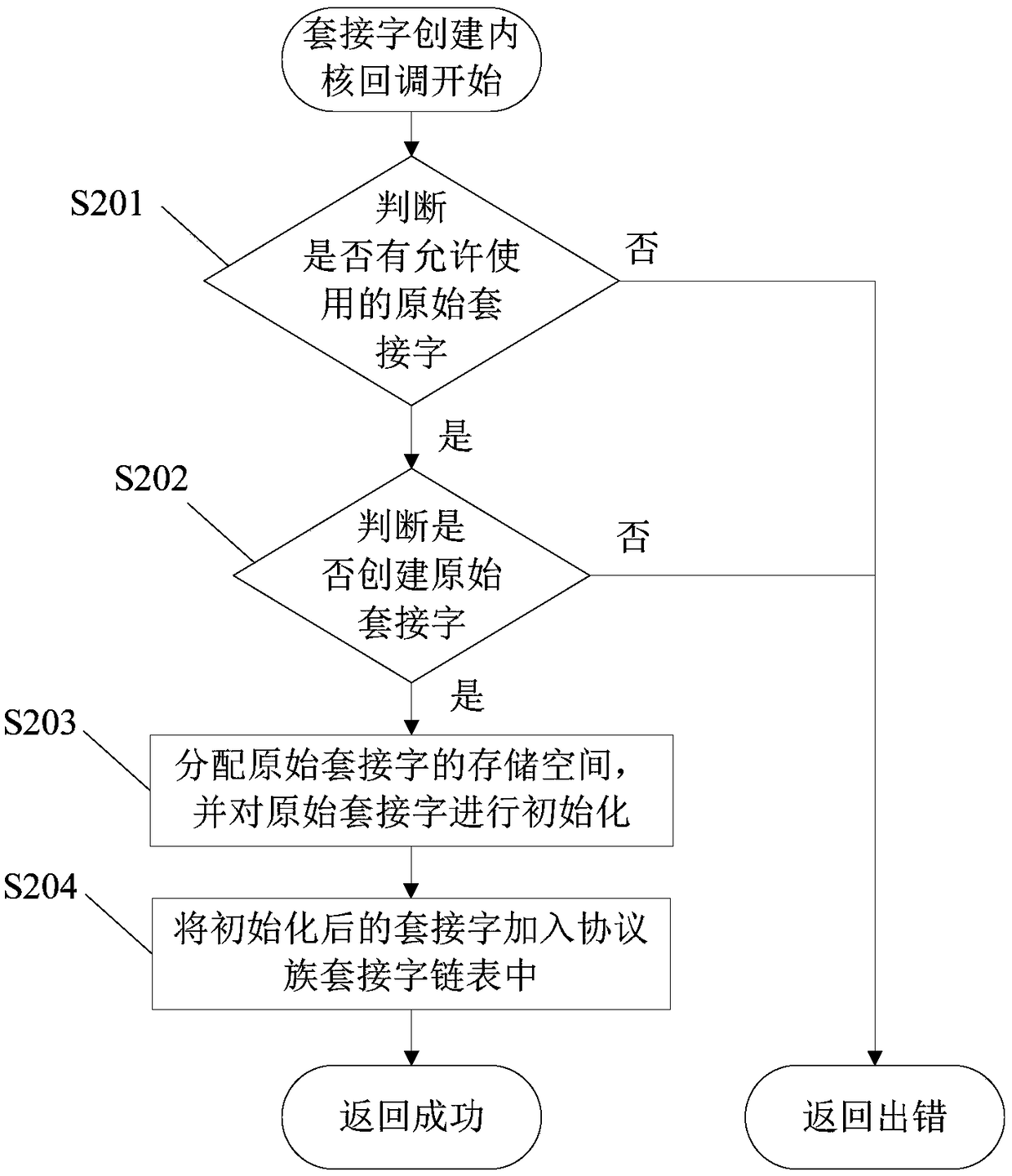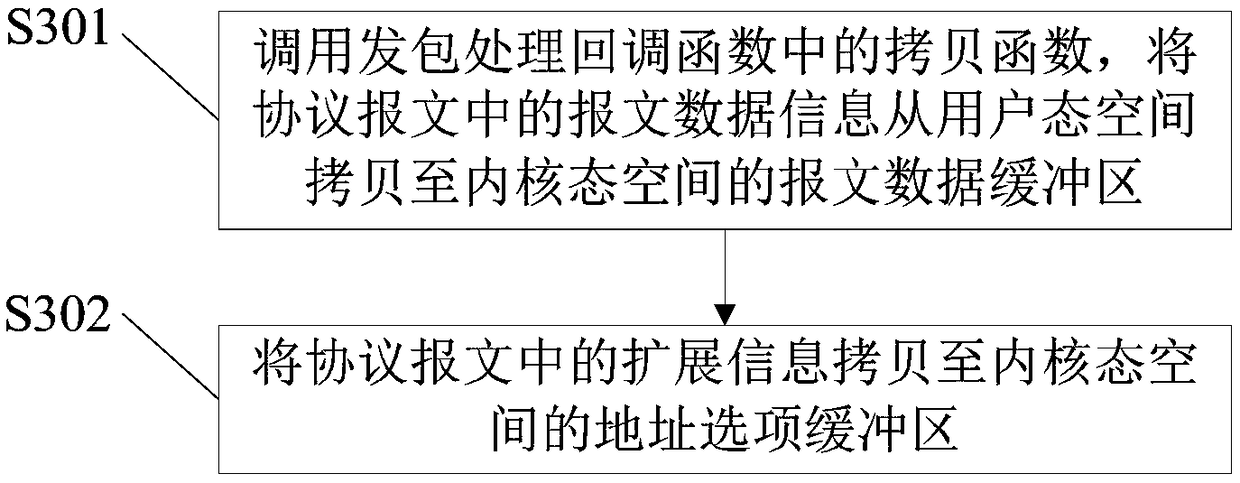Protocol message cross-layer communication method and device and electronic equipment
A protocol message and communication method technology, which is applied in the field of devices and electronic equipment, and the field of protocol message cross-layer communication method, can solve problems such as waste of computing resources, packet loss of protocol messages, etc., and achieve the goal of reducing waste and improving safety and reliability Effect
- Summary
- Abstract
- Description
- Claims
- Application Information
AI Technical Summary
Problems solved by technology
Method used
Image
Examples
Embodiment 1
[0051] The embodiment of the present invention provides a protocol message cross-layer communication method, the execution subject of the method is the CPU that has already received the packet processing, that is, the CPU has received the protocol message, and stores the protocol message in the pre-created in the buffer of the socket. see figure 1 As shown, the method includes the following steps:
[0052] S101: call the sending function provided by the kernel, and fill in the message data information and extended information of the protocol message to be sent.
[0053] The above message data information and extended information are stored in the pre-created socket buffer during the packet receiving process, and the protocol processing module calls the system call sending function (sendto) to fill in the data of the protocol message to be sent, The sending address option parameter part is filled with some extended information (such as layer 2 header, outgoing interface numbe...
Embodiment 2
[0080] An embodiment of the present invention provides a protocol message cross-layer communication device, see Figure 6 As shown, the device includes: a protocol processing module 61 , a protocol family processing module 62 , and a packet sending module 63 .
[0081] Among them, the protocol processing module 61 is a module in the user state, and the protocol family processing module 62 and the packet sending module 63 are modules in the kernel state. The protocol processing module 61 is used to call the sending function provided by the kernel to fill in the message data information and extended information of the protocol message to be sent; the protocol family processing module 62 is used to call the socket in the pre-created socket in the kernel. Packet processing callback function, the protocol message is converted from the user state space to the kernel state space; the packet sending module 63 is used to packetize the protocol message converted to the kernel state spac...
Embodiment 3
[0086] An embodiment of the present invention provides an electronic device, see Figure 7 As shown, the electronic device includes: a processor 70, a memory 71, a bus 72 and a communication interface 73, and the processor 70, the communication interface 73 and the memory 71 are connected through the bus 72; Executable modules, such as computer programs. When the processor executes the computer program, the steps of the methods described in the method embodiments are realized.
[0087] Wherein, the memory 71 may include a high-speed random access memory (RAM, RandomAccessMemory), and may also include a non-volatile memory (non-volatile memory), such as at least one disk memory. The communication connection between the system network element and at least one other network element is realized through at least one communication interface 73 (which may be wired or wireless), and the Internet, wide area network, local network, metropolitan area network, etc. can be used.
[0088]...
PUM
 Login to View More
Login to View More Abstract
Description
Claims
Application Information
 Login to View More
Login to View More - R&D
- Intellectual Property
- Life Sciences
- Materials
- Tech Scout
- Unparalleled Data Quality
- Higher Quality Content
- 60% Fewer Hallucinations
Browse by: Latest US Patents, China's latest patents, Technical Efficacy Thesaurus, Application Domain, Technology Topic, Popular Technical Reports.
© 2025 PatSnap. All rights reserved.Legal|Privacy policy|Modern Slavery Act Transparency Statement|Sitemap|About US| Contact US: help@patsnap.com



